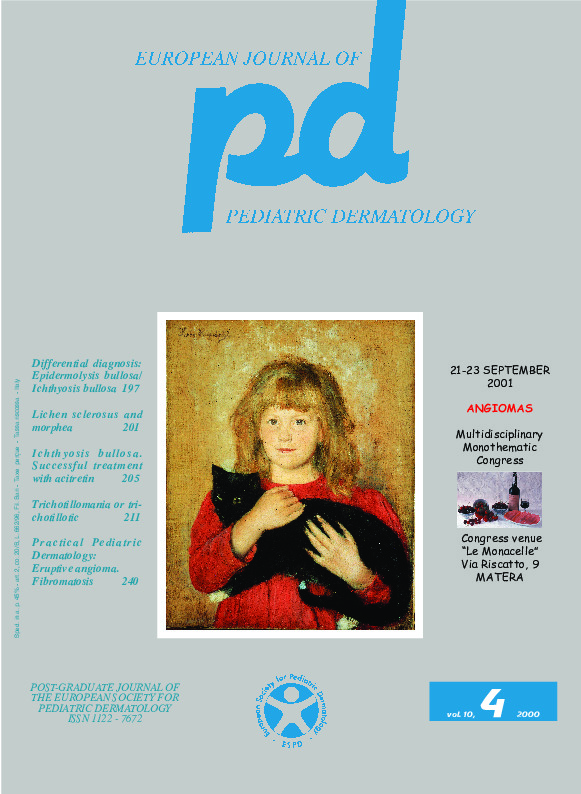Recessive dystrophic epidermolysis bullosa/Epidermolytic ichthyosis.
Downloads
How to Cite
Bonifazi E., Garofalo L. 2000. Recessive dystrophic epidermolysis bullosa/Epidermolytic ichthyosis. Eur. J. Pediat. Dermatol. 10 (4):197-8.
pp. 197-8
Abstract
Recessive dystrophic epidermolysis bullosa (RDEB) is an inherited disease due to a mutation of the gene codifying for collagen VII, which is the most important component of the anchoring fibrils. The consequent defect of the anchoring fibrils, which are necessary for the connection between epidermis and dermis, is responsible for the dermo-epidermal cleavage and therefore for blisters following even trivial traumas. Due to the collagen defect, blisters heal with atrophic scars, justifying the name of the disorder.Epidermolytic ichthyosis or congenital erythrodermic bullous ichthyosis (BI) is an inherited disorder due to a mutation of the gene codifying for keratins 1 and/or 10. The consequent defect of the keratin manifests itself with microscopic (epidermolytic hyperkeratosis) and ultramicroscopic alterations of the epidermis and, clinically, with blisters and scaling erythroderma.
Both the disorders can be present at birth with blistering lesions, which are especially localized on sites of trauma, therefore requiring a differential diagnosis.
Keywords
Recessive dystrophic epidermolysis bullosa

